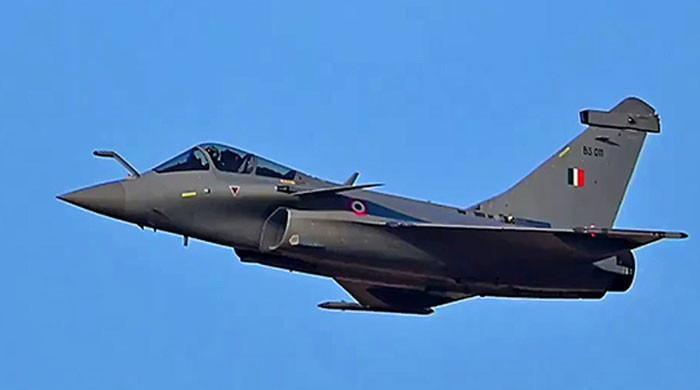- Rafale equipped with 200 km weapons approached the border.
- Pakistan has blocked on -board sensors of IAF jets, communication, radar.
- Fighters J-10C of PAF equipped with PL-15 missiles in the 230 km range.
Since the Pahalgam incident, India has been trying to provoke Pakistan with its warm and aggressive actions near the border, but Pakistan has shown reservoir and has prevented India from all kinds of aggression with a timely defensive measures.
Due to effective defensive measures, Pakistan Air Force (PAF) has once again foiled India’s attempt to head to Pakistan a few days ago, forcing India’s modern burst aircraft to withdraw.
The PAF thwarted India’s advance in the night between April 29 and April 30. According to relevant sources, the PAF took this measure the same night when the Federal Minister of Information Attaullah Tarar expressed the fear that India can attack Pakistan in the following 24 to 36 hours.
The sources said that four Indian Rafale planes took off from Ambala air base in the Indian State of Haryana and went to Pakistan at a 1,200 kilometers ground speed. The Indian plane came very close to Pakistani airspace, but at no time did they cross it.
However, as these planes were equipped with modern Air-Sol missiles Spice 2000, which have a range of 200 kilometers, this action by the Indian Air Force (IAF) was a hostile act because the Indian plane could have carried out field operations in Pakistan while remaining in their own airspace.
These planes stole at an altitude of 40,000 feet when the Pakistan air defense system through its electronic war assets blocked the embedded plane and communication and radar systems, due to which these planes have lost contact with each other and the ground.
According to sources, at the same time, the J-10C planes of the PAF were also in the air to face the Indian planes and prevent any kind of assault. Because of this situation, Indian planes had to do an emergency landing in Srinagar instead of returning to Ambala.
It is relevant to mention here that the Rafale planes were equipped with missiles with a range of 200 km that night, but the J-10C planes of the Pakistani Air Force were equipped with PL-15 missiles with a visual beach beyond 230 km. This means that the Pakistani plane was also able to target the Indian plane while remaining in their own territory.
Relevant sources indicate that if our air defense system had not blocked communication systems and radar of Rafale planes that night, Indian planes could have taken measures in Pakistani territory.
Another interesting point to note is the fact that Pakistan Air Force treated the four Rafale planes in the night between April 29 and 30 in the same way which blocked the radar and the communication systems of the Indian pilot Abhinandan in 2019. However, at that time, the Indian pilot was driving an old plane, but this time, the Pakistani air force was confronted with the 4.5 -generation plane.
According to relevant sources, after having faced a failure of the night between April 29 and April 30, the IAF planned to take action in Pakistan on Friday.
But as soon as the intelligence of this affair was received, Pakistan immediately had 40 to 50 planes in the air, including F16, J-10C and JF-17. This action by Pakistan forced the IAF to abandon its plan.
This means that India was again faced with a reverse similar to 2019.
According to relevant sources, the multi-domain capacities of the armed forces, in particular the PAF, play an important role in the annoyance of Indian ambitions. The relevant sources indicate that the PAF is always one step ahead of India in the fields of electronic, cyber and spatial war. And in the last four or five days, Pakistan has fully benefited from these modern capacities and took such proactive actions.
Pakistan has thwarted the most advanced burst aircraft in India. India had pinned many hopes on the Rafale plane in 2019. After the 2019 backdrop, Indian Prime Minister Narendra Moda himself admitted his defeat and said that if India had burst at the time, the result would have been different.
Now India has burst, but due to effective operations and modern PAF technology, India has not been able to achieve its objectives.
Originally published in the news




